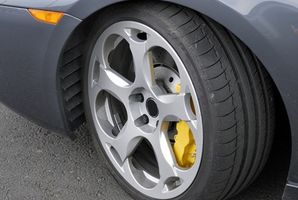Performing basic car maintenance tasks can keep your car running more efficiently, saving you money, extending the life of your car and keeping you safe. Some of these tasks and checks should be done at regular scheduled times, whereas others should be done when your car reaches a certain mileage. You may want to consult your car’s owner’s manual for the recommended maintenance schedule as well as guidance for performing any of the tasks.
Weekly Maintenance
The maintenance tasks you should do weekly are simple, and some can be done both after and while you fill your car with gasoline.
Check your coolant level. The coolant reservoir should have low- and high-level markings. Be careful! The coolant reservoir is pressurized and heated. Wait until the engine is cool to open the reservoir to add coolant and water.
Check your tire pressure and look for tread wear on your tires. Tire-pressure gauges are inexpensive and sold at auto supply stores. It’s good to always use your own. If the tread wear is uneven you may need to get your tires balanced.
Check your oil using the dipstick and add oil as necessary.
Top off your windshield-fluid reservoir.
Inspect your wiper blades. If your blades smear your windshield or chatter when they move, replace them.
Check that your turn signal, brake lights, flashers and headlights work and are clean. Automotive fuses are inexpensive and easy to replace.
Bounce your car to test its shock absorbers. Your car should stop bouncing when you pull back. If it does not, your shocks may be worn or leaking.
Monthly Maintenance
Your car’s belts and hoses are made of rubber, which can wear, stretch or become frayed over time.
If your car does not have spring-loaded belt tensioners check your belts by pressing down on them. Belts with more than a half-inch of slack should be tightened.
Replace rotting, bulging or brittle hoses.
Check both your power-steering and transmission fluids using each reservoir’s dipstick. Transmission fluid should be checked with your engine running and warm. Make sure your car is in park, and the parking brake on before doing so!
Your brakes accumulate a lot of dirt. Make sure to wipe it from the brake master-cylinder reservoir’s lid before opening it and filling with brake fluid.
Do not overfill any of these fluids.
Check your air filter bimonthly and replace it if it’s dirty.
Mileage-Based Maintenance
Check your owner’s manual for your car’s recommended maintenance schedule. The services that your manufacturer recommends at major mileage milestones can keep your car running well and extend its lifetime. These services typically are required in increments of 5,000 and 10,000 miles. While some of these tasks, such as changing your transmission fluid, are complex and should be done by a qualified mechanic, many of them are simple to do yourself. Regardless of whether you elect to do them yourself or use a mechanic, do not avoid this maintenance.

Basic Car Maintenance Checklist
by
Tags:

Leave a Reply